|
|
Tail Panel
|
|
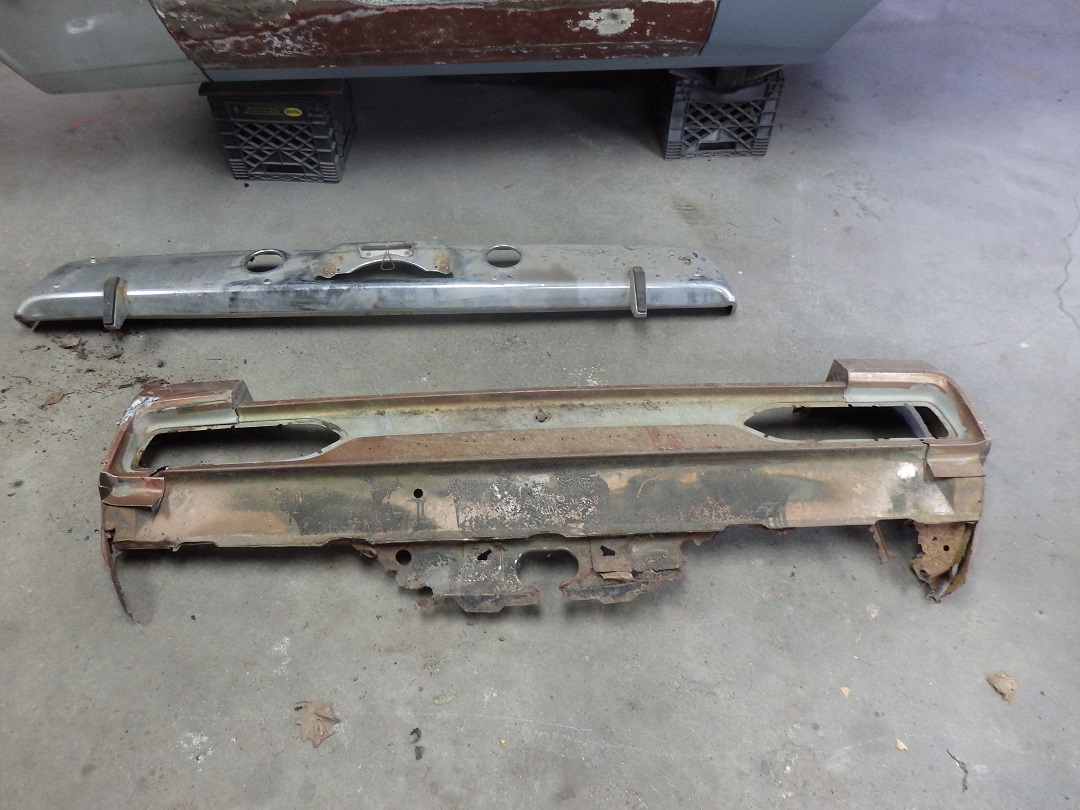 The original tail panel was damaged by someone with a prybar trying to get into the trunk. It was damaged beyond reasonable repair. The car came with this one clipped from another car. From
the looks of it, that car wasn't in great shape either.
The original tail panel was damaged by someone with a prybar trying to get into the trunk. It was damaged beyond reasonable repair. The car came with this one clipped from another car. From
the looks of it, that car wasn't in great shape either.
|
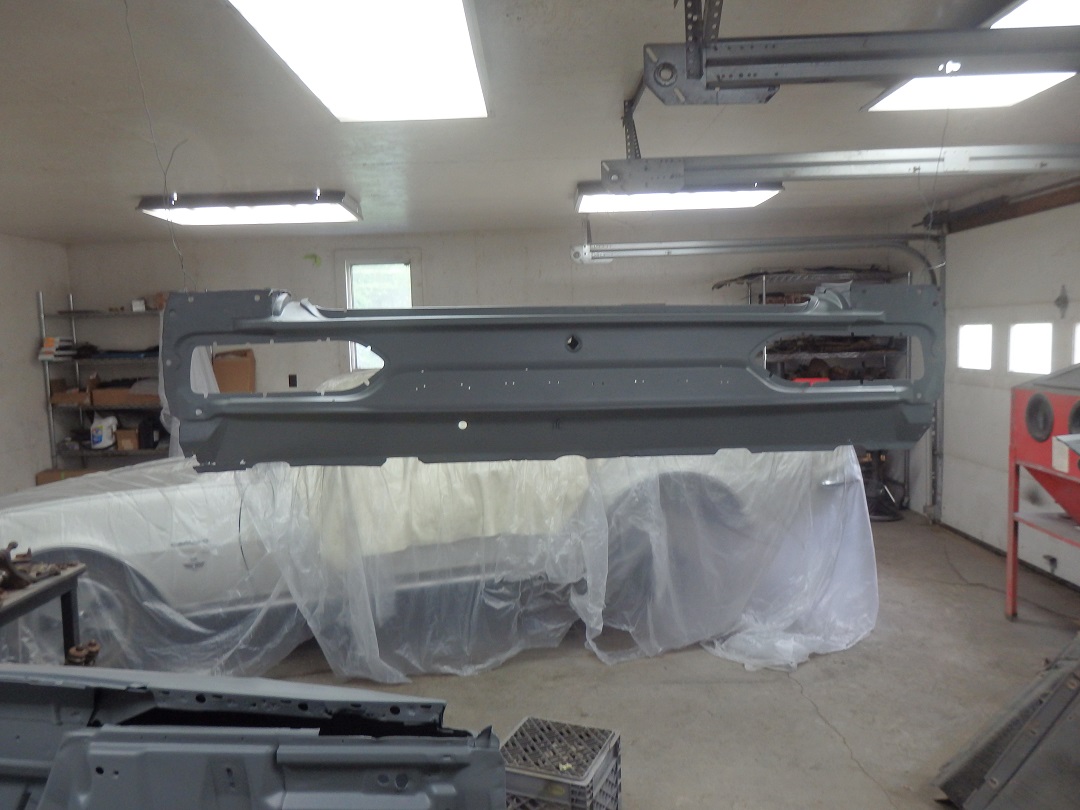 The first think I did was sandblast it and prime it with epoxy primer.
The first think I did was sandblast it and prime it with epoxy primer.
|
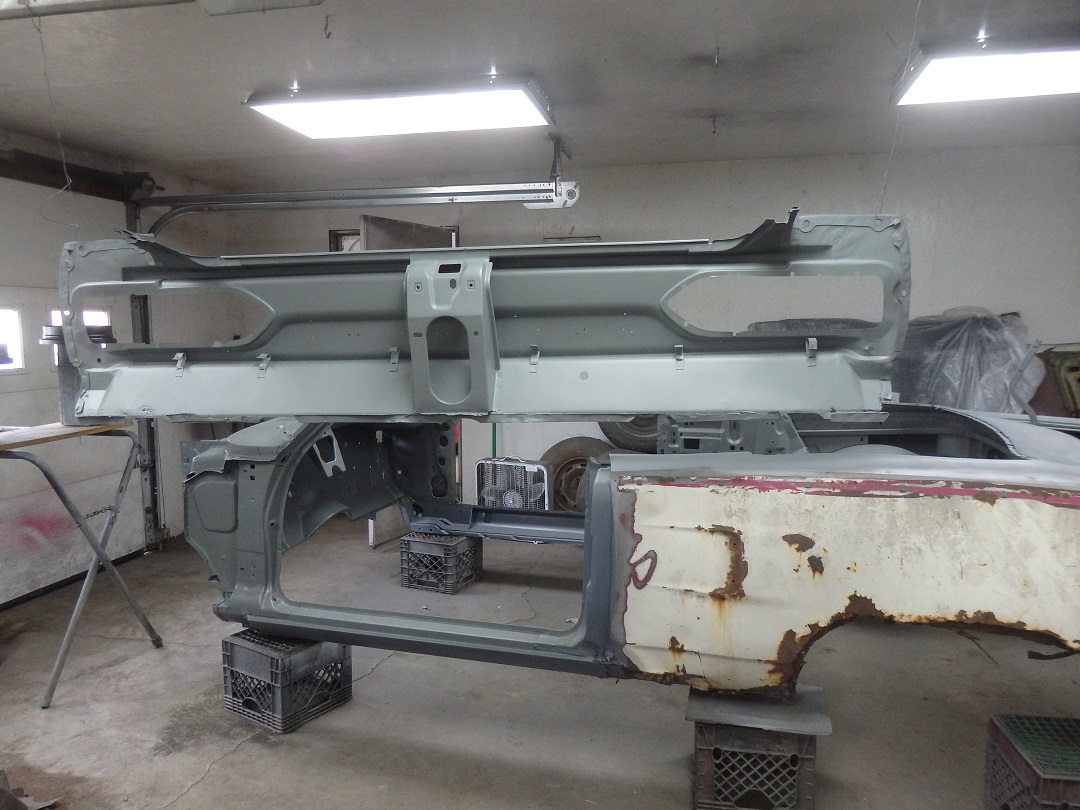 The inner latch support was still attached to it, so that was a benefit.
The inner latch support was still attached to it, so that was a benefit.
|
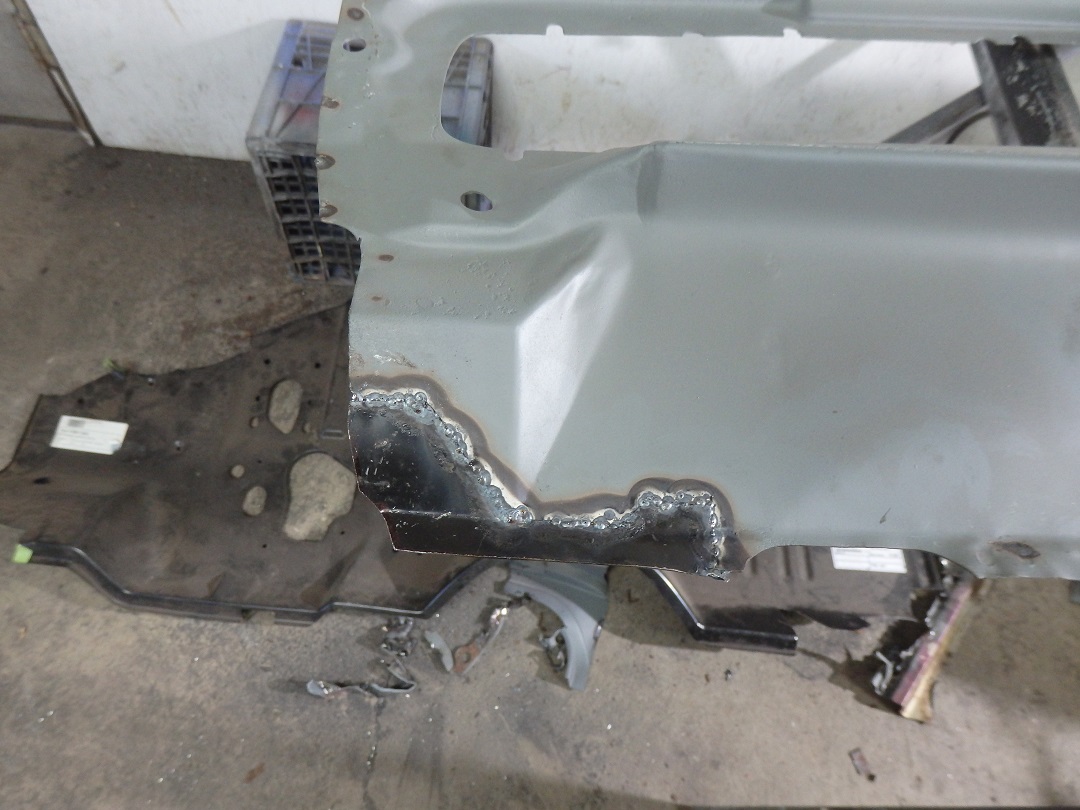 The bottom rear corners were rust damage, but it didn't take long to make and graft a new piece to it.
The bottom rear corners were rust damage, but it didn't take long to make and graft a new piece to it.
|
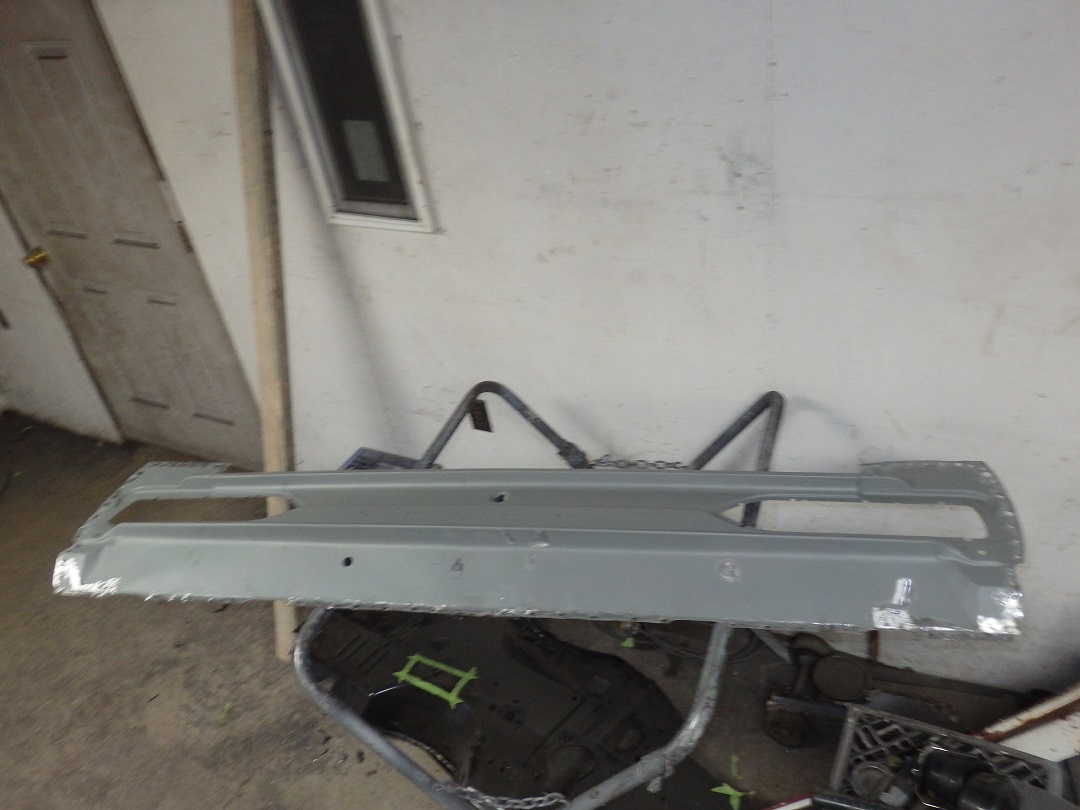 Here is the panel with the repairs completed.
Here is the panel with the repairs completed.
|
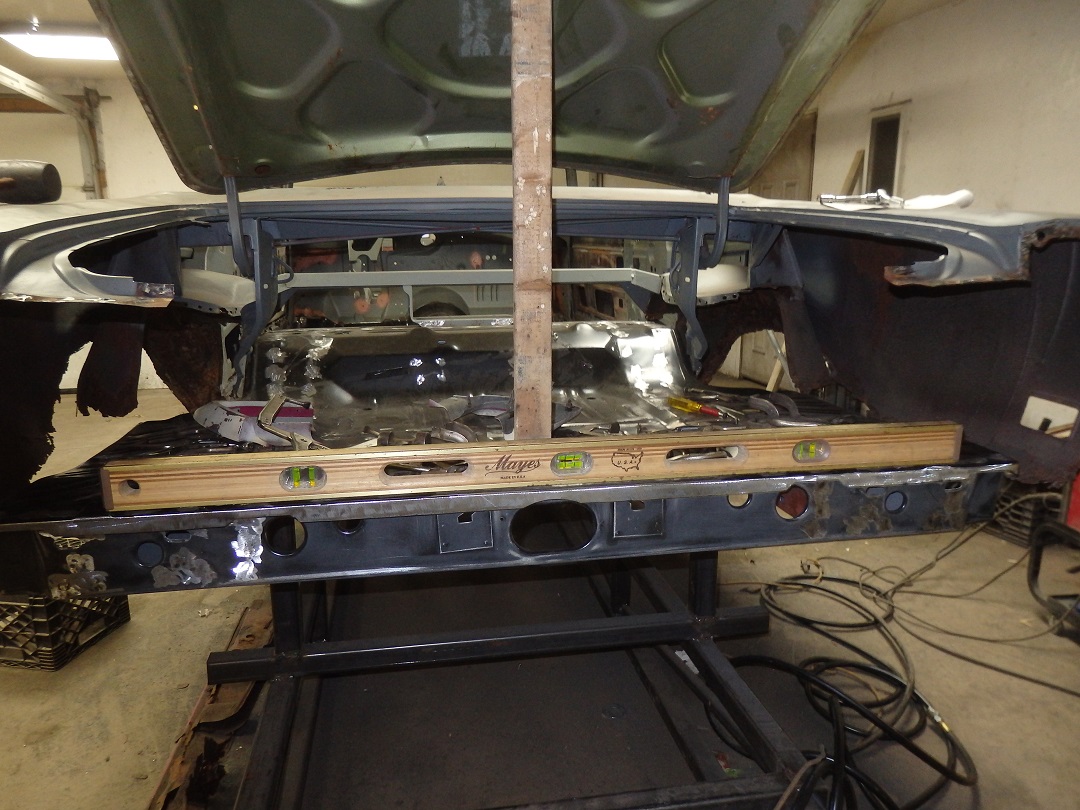 Before installing the tailpanel I made sure the trunk pan still read level and then I install the trunklid.
Before installing the tailpanel I made sure the trunk pan still read level and then I install the trunklid.
|
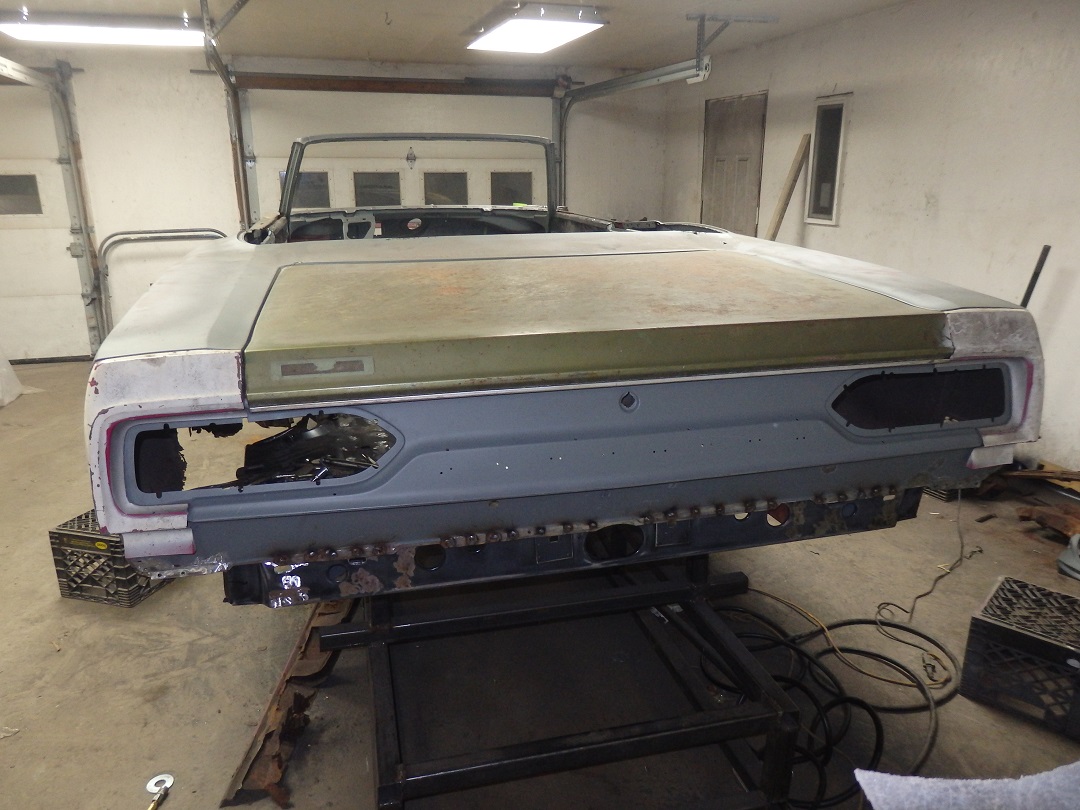 The installation went pretty quick. I clamped the tailpanel in place where I thought it would go. Then I installed the rear quarter extensions. With all the gaps
even around the tail panel and trunk lid, I plug welded it in place.
The installation went pretty quick. I clamped the tailpanel in place where I thought it would go. Then I installed the rear quarter extensions. With all the gaps
even around the tail panel and trunk lid, I plug welded it in place.
|
|
|
Rear Inner Filler Panel Area
|
|
NOTE: This next series of pictures are our of sequence from how I did the car. The rear wheelhouses were replaced before I did these next repairs. Refer to the LH and RH Rear Quarter Panel
pages to see how that was done.
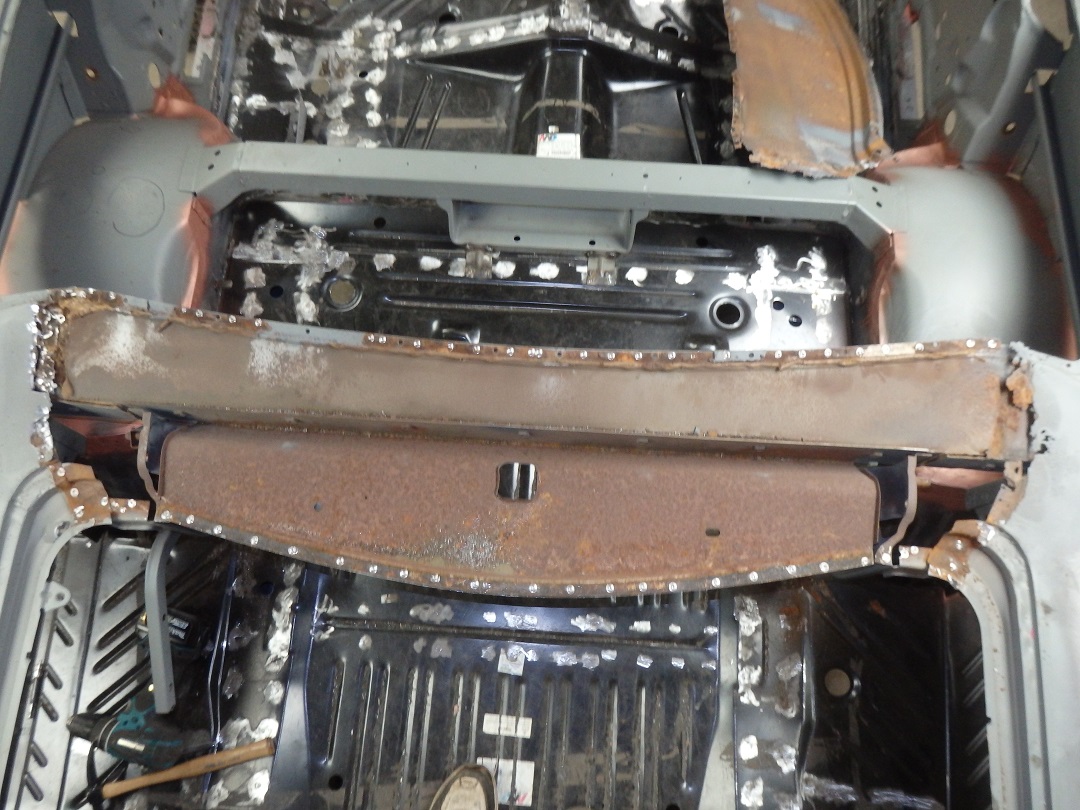 The rear filler panel area / convertible well area commonly rust out on these cars. And this car need some repairs on the gutters. With no repo parts for convertibles rear panels, I had to make what I could.
The rear filler panel area / convertible well area commonly rust out on these cars. And this car need some repairs on the gutters. With no repo parts for convertibles rear panels, I had to make what I could.
First up was to drill out all of the spot welds that held the rear filler panel in and cut the rusty lead cover sides out.
NOTE: This is a structural panel. Normally you would need to put cross bracing in.
|
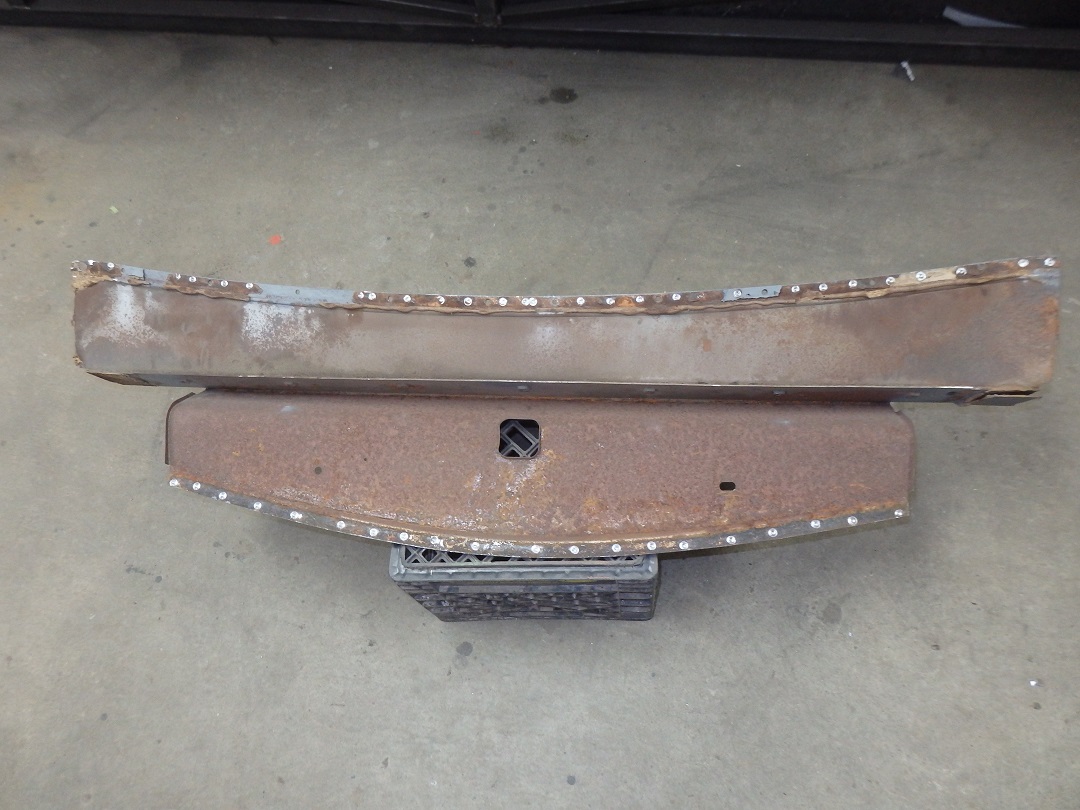 The rear inner structure was barely held in place with spot welds on this car, which probably lead to the rust in this area. I had to remove it as the gutters on the inside needed to be repaired.
The rear inner structure was barely held in place with spot welds on this car, which probably lead to the rust in this area. I had to remove it as the gutters on the inside needed to be repaired.
|
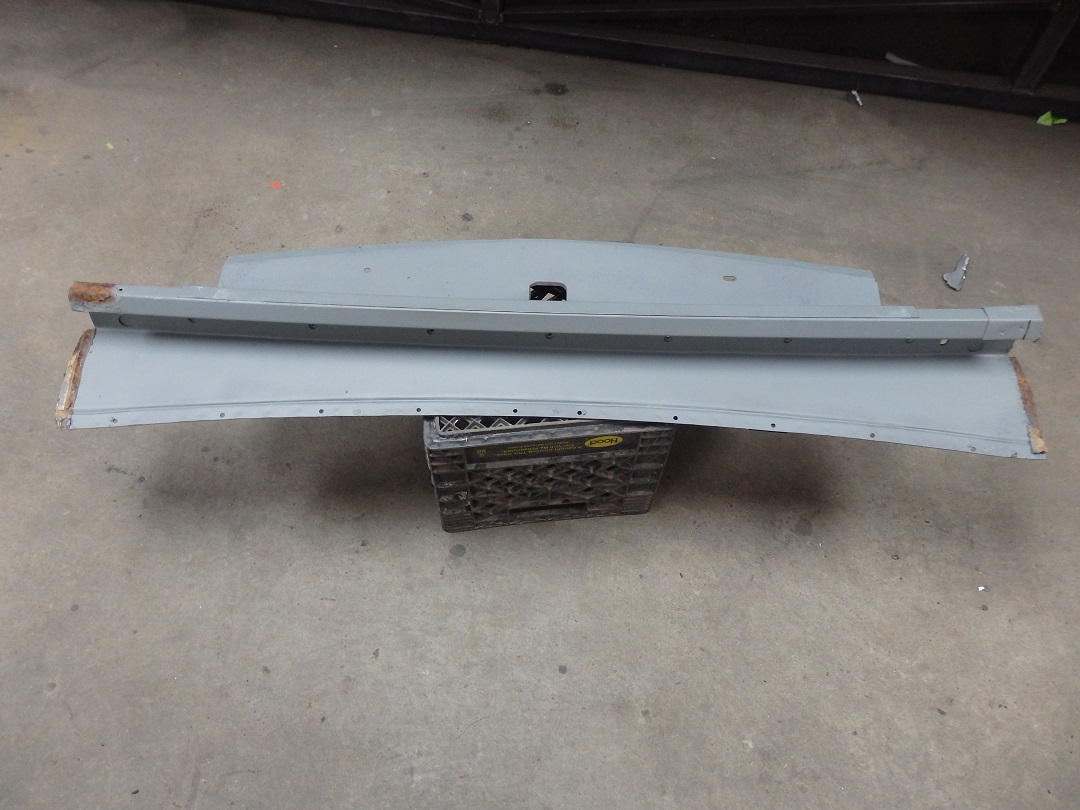 The rear panel itself just needed to be sandblasted and welded back in.
The rear panel itself just needed to be sandblasted and welded back in.
|
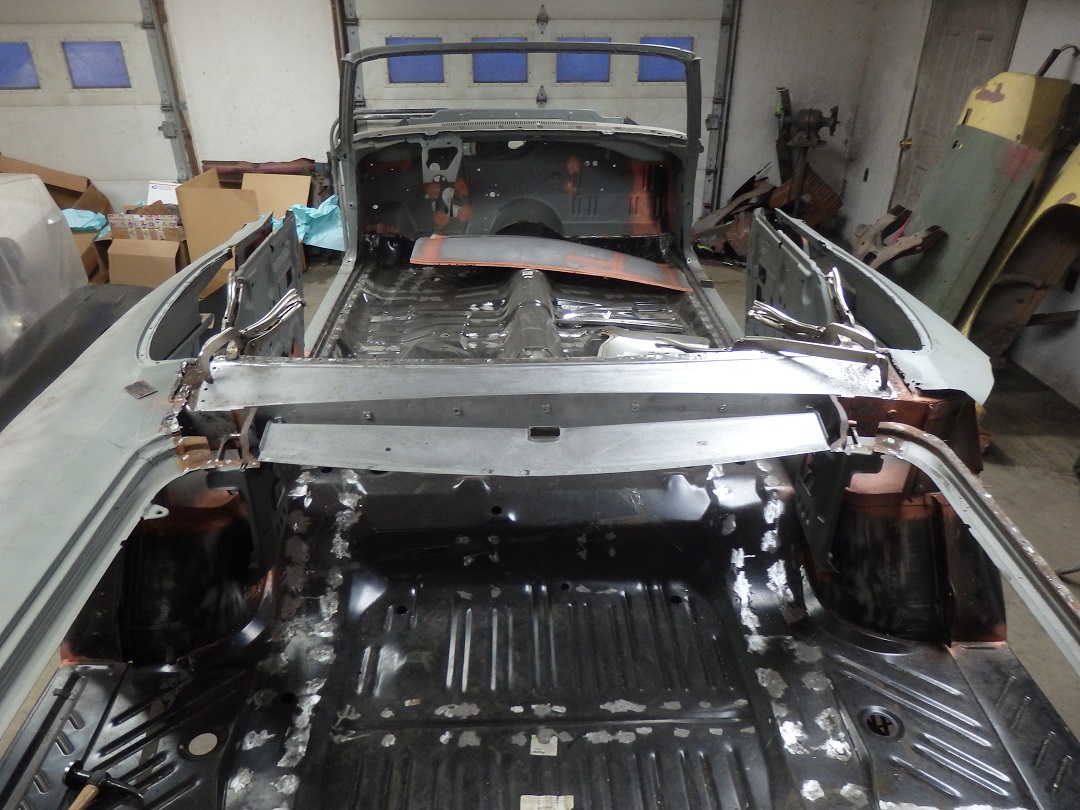 This picture shows the rear inner panel being clamped in place prior to welding. This time it would be welded in correctly with no seam sealer added after the car was painted to protect the top.
This picture shows the rear inner panel being clamped in place prior to welding. This time it would be welded in correctly with no seam sealer added after the car was painted to protect the top.
|
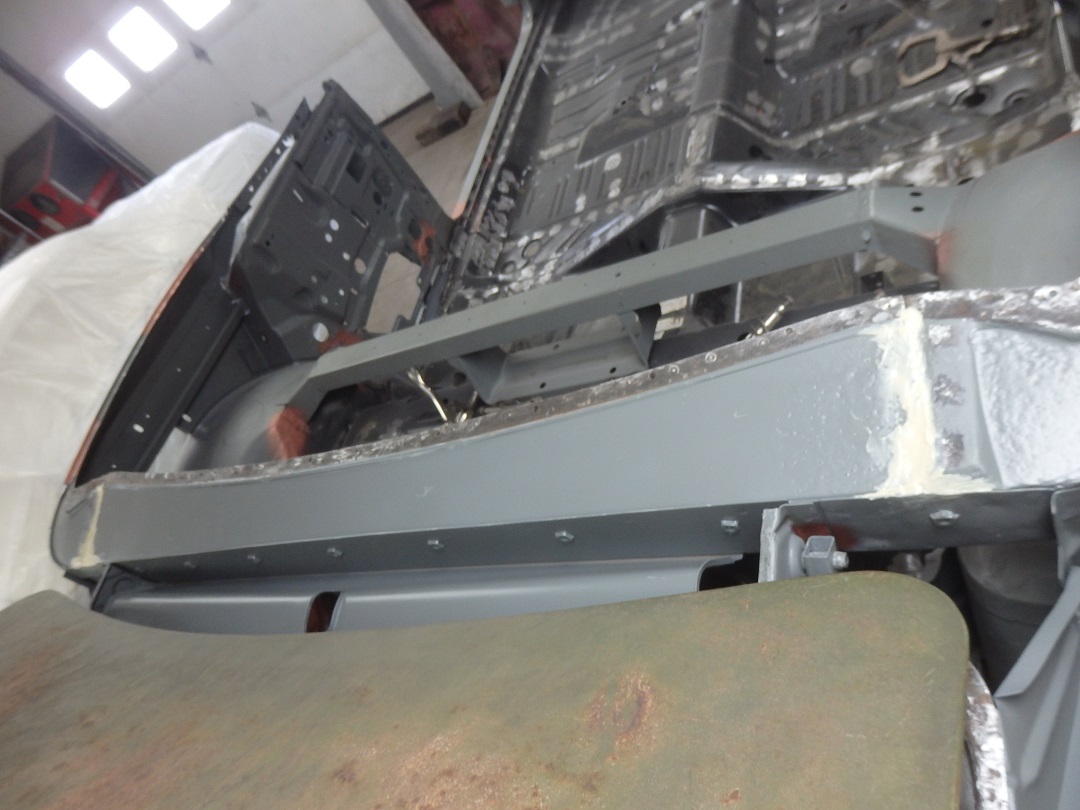 Once it was welded back in, the inner structure was primed with epoxy primer and the inner seam was sealed with 3M 08505 Fast & Firm Seam Sealer.
Once it was welded back in, the inner structure was primed with epoxy primer and the inner seam was sealed with 3M 08505 Fast & Firm Seam Sealer.
|